Recently, more and more people are trying to introduce quinoa microgreens into their daily diet. This is because it has a high content of nutrients. At the same time, it is not difficult to grow it. Read more about growing quinoa microgreens in this article.

Contents
Features of quinoa microgreens
White and red quinoa is a fairly popular staple, and quinoa microgreens are no exception. This is the best option for creating a complete nutritional profile.
You may notice the pleasant taste and a large number of carbohydrates in the composition. Quinoa visually resembles a grain; however, it is a seed.
Therefore, you can plant seeds to get plants.
You should not harvest the entire plant too early because leaves should form on the stems. They are considered the most delicious and nutritious.
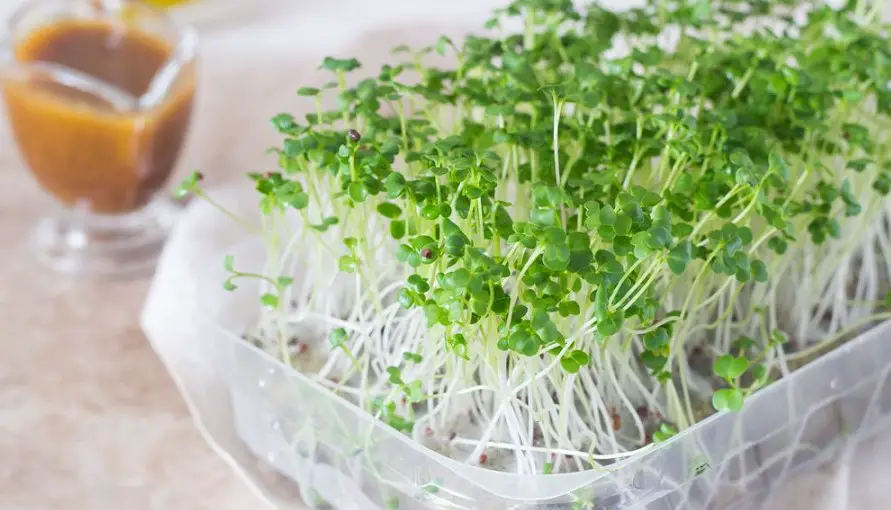
Benefits of quinoa microgreens
Quinoa is considered to be quite a healthy and nutritious microgreen that should be included in the diet. The composition is high in amino acids, healthy gluten, and carbohydrates.
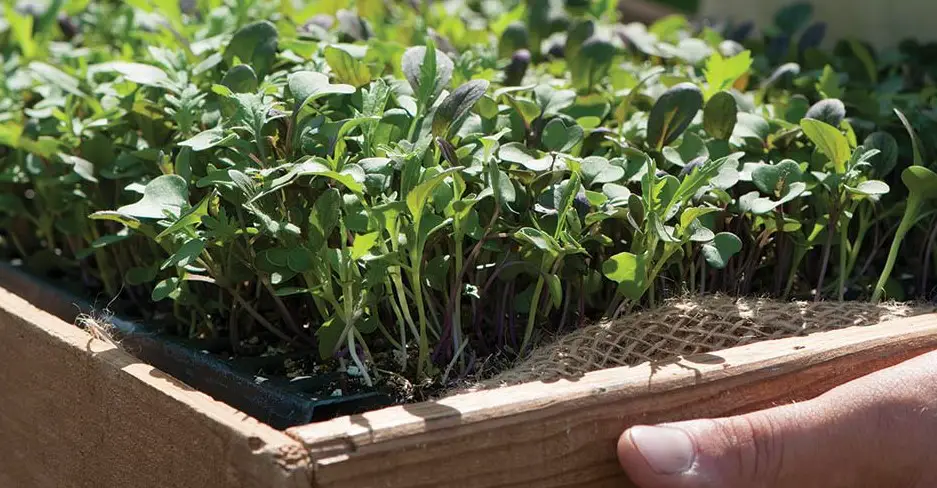
In figures
Quinoa microgreens contain 21 grams of carbohydrates, about 4 grams of protein, and 1.9 grams of fat in the 100 g of product. Calorie content – only 120 kcal per 100 g of product.
Of note is the content of 0.9 grams of sugar and almost 3 grams of fiber. Despite the high content of nutrients, the product is very low in calories.
Quinoa microgreens are much higher in protein and fiber than other grains. Even when compared to whole grains.
At the same time, the fats, and sugar content compared with other microgreens is low, which will positively affect the level of sugar and figure.
Quinoa microgreens are rich in micronutrients and macronutrients, including magnesium, manganese, copper, phosphorus, zinc, and folates. More details about all the advantages of growing quinoa microgreens will be discussed below.

Gluten-free and low-sugar content
Microgreens are virtually gluten-free. It is so small that it does not affect the body.
When compared with other types of food, the composition contains practically no sugar. Almost all carbohydrates that are in the composition are presented in the form of starch.
Note the high fiber content. This suggests that the product has a positive effect on the digestive system.
High vegan protein content
Quinoa microgreens are high in protein. Therefore, even vegans can eat quinoa microgreens. The composition also contains a large number of essential amino acids that improve the condition of muscle tissue.
If you’re into sports but have given up eating animal products, you can include superfood quinoa microgreens in your diet.
Protein helps build muscle tissue, and amino acids will help repair muscle. At the same time, you may notice a positive effect on the hair and skin.
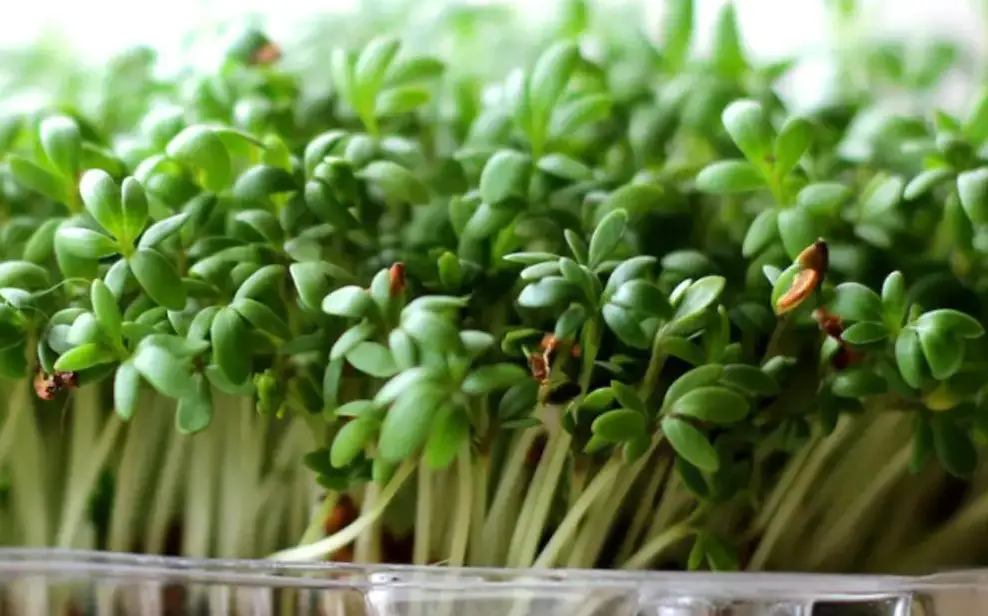
A small amount of fat
Given the fact that quinoa microgreens contain practically no fat, this product has a positive effect on the condition of the figure.
With this product, you can not only lose weight but also maintain it at a certain level.
Quinoa microgreens contain palmitic, oleic, and linoleic acids. They are much healthier than animal fats.
Positive effect on bone tissue
Quinoa microgreens are high in magnesium. Therefore, the product has a positive effect on the condition of the bones.
At the same time, it improves metabolism. Your bones will be strong, which will prevent the early development of osteoporosis.

Strengthening the cardiovascular system
Quinoa microgreens are high in potassium. It is not in the seeds, but in the greenery itself, there is quite a lot. This component has a positive effect on heart health. It helps lower blood pressure. At the same time, less moisture will be retained in the body.
Another thing to note is the fact that the fiber found in quinoa microgreens is considered soluble. It mixes with bile in the liver to form iron, which is then excreted.
This process requires cholesterol. If there is a lack of cholesterol in the body, then it will be taken from the blood. This prevents the formation of blood clots.
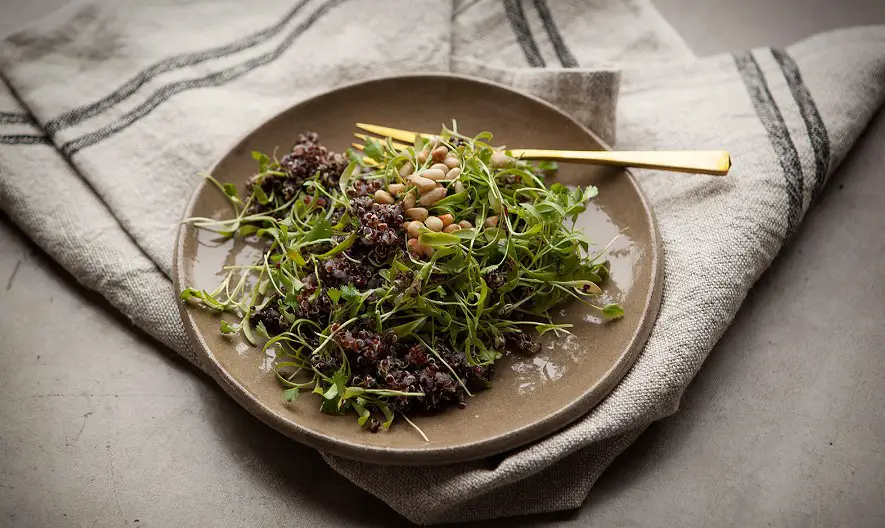
Disease prevention
Quinoa microgreens are rich in vitamins and minerals. If you use this product regularly, you can prevent various diseases that are caused by a lack of vitamins or malnutrition.
Quinoa microgreens have been reported to prevent cancer, diabetes, and hypertension. The product helps to increase the amount of iron in the body, which will be an excellent prevention of anemia.
Positive effect on the condition of hair and skin
As already mentioned, quinoa microgreens contain about 9 amino acids that cannot be replaced by anything because the body does not produce them on its own.
All are geared towards longevity and providing the protein that helps build healthy muscles.
However, the product has a positive effect on the condition of the skin. If used regularly, the skin is clean and radiant.
It should be noted a positive effect on the hair. Hair follicles are strengthened, which will prevent hair loss, and they are protected from the negative effects of the environment.
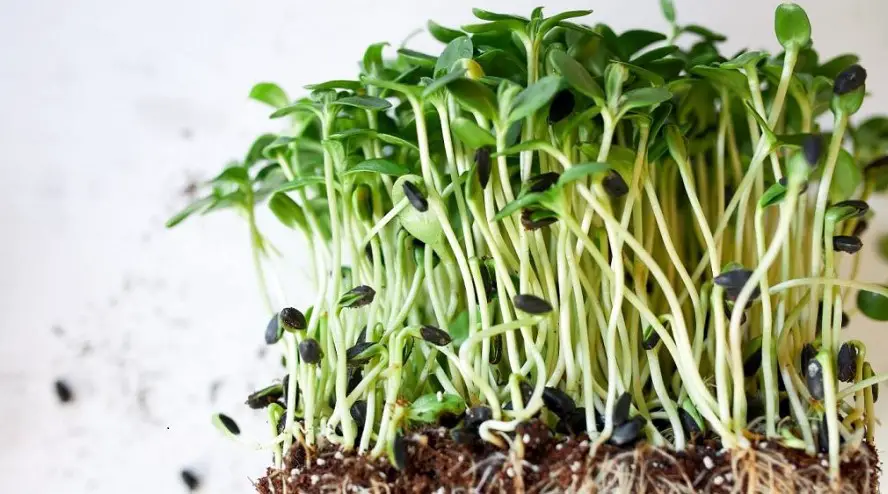
Help in losing weight
Quinoa microgreens contain fiber. It contributes to the rapid saturation of the body, so you will not overeat. This has a positive effect on weight control.
Thanks to the content of 20-hydroxyecdysone, the body burns more calories. Therefore, the weight loss ratio will improve.

How to grow quinoa microgreens?
If you want to grow quinoa microgreens at home, you need to get the process right. More details about all stages of growing quinoa microgreens will be described below.
Preparatory stage
First of all, soaking the seeds is required. Place them in a deep container or plastic bag for seeds and fill them with cold water.
Soaking should be about 8–12 hours. This helps the quinoa seedlings germinate better. During this time, you should change the water 1–2 times to prevent the accumulation of bacteria in the water.
It is best to work with live seeds. The likelihood of good germination is significantly reduced if they were previously processed.
Quinoa seeds contain a lot of saponins. These components can provoke an allergic reaction. This may manifest as swelling or feeling unwell.
To remove saponins, seeds should be washed. Ultimately, the water should be clear. Only after that, you can proceed to further work.
Once you are sure that the water runs clear, you can move the seeds to the germinator. Keep the seeds, while they are soaking, away from light. After all, otherwise, they are damaged, which will negatively affect germination.
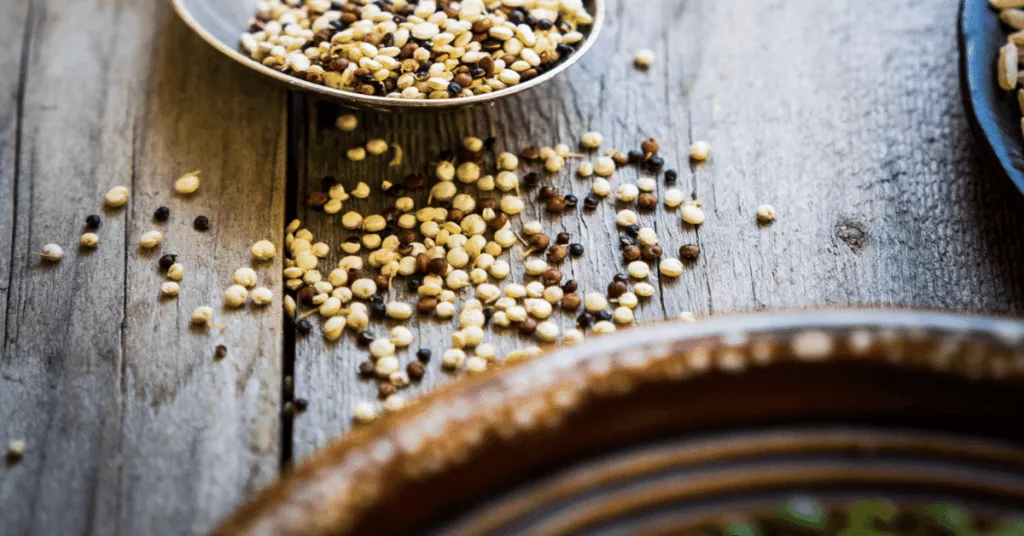
Planting process
After a few days, the first symptoms of germination will appear. This suggests that quinoa seeds can be planted. To do this, prepare a tray, the size of which is 10–20 centimeters. It should be filled with 1–2 inches of good soil. It needs to be sterilized first.
You can also fill the container with coconut coir. If possible, add some earthworm castings. This enhances the same nutritional profile. Scatter the seeds over the surface of the mixture, and sprinkle with a little soil. Make sure that the seeds do not stick together, as this can cause mold to form.
It is not necessary to cover the container. Quinoa must receive enough sunlight. However, they should not be kept in direct sunlight if you want to get a good harvest. It is important to provide quality ventilation systems that prevent mold growth.
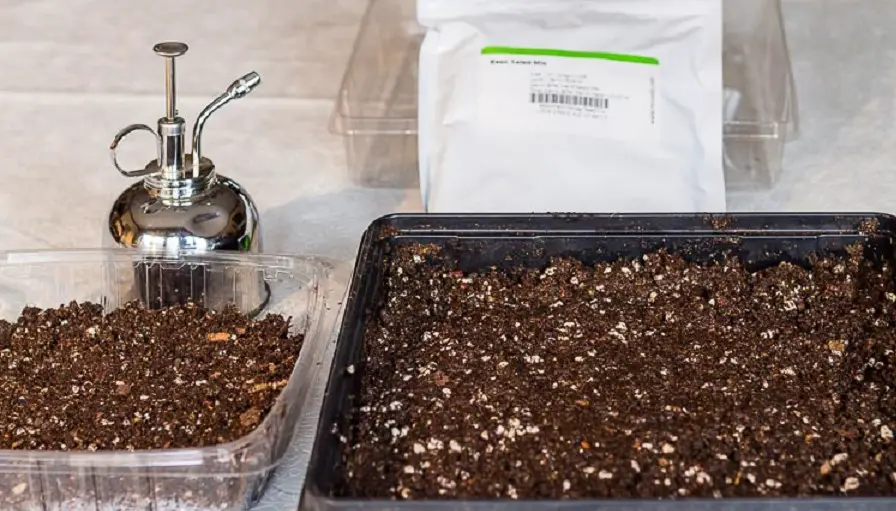
Maintenance
After that, the seeds should be properly cared for. It is recommended to water only as needed. It is better to pre-make holes in the landing tank for drainage. This allows the quinoa plants to absorb the right amount of moisture, and unnecessary water drains into the pan.
It is best to carry out the watering by spraying. Make sure about the constantly moist soil. The first few hours after watering, the container can be covered with a lid. This ensures that the moisture in the tray lingers a little, and the plants water better.
Such actions should be carried out until the height of the quinoa plants is 0,7-1,2 inches. After the top tray can be opened. It is recommended to put it on a light source. After that, bottom watering is required.
After one and a half to two weeks, flat and green leaves are formed. The optimal height is 2 inches. This means that you can harvest and enjoy a tasty and healthy product. You need to cut the stem along with the leaves using a sharp and sterilized tool.
You need to harvest on time because adult quinoa plants quickly absorb nutrients. If young bushes do not have enough food, they will experience stress, which will cause their death.

FAQ
When it comes to using quinoa microgreens, people face numerous questions. The answers to them will be presented below.
Is sprouted quinoa good for you?
Yes, quinoa sprouts have a much better effect on the human body because it contains more nutrients. It has a better effect on digestion processes, which has a positive effect on the process of losing weight.
Quinoa sprouts reduce the content of phytates, which prevents the body from absorbing minerals and vitamins.
What seeds are not good for microgreens?
Not a good option is leafy greens, which are unsuitable for eating. Given that you will eat leaves and stems, choose seeds that will form edible greens.
Is it possible to sprout quinoa?
To germinate quinoa, pour filtered water over the product and wait 1 hour. After rinsing the quinoa, thoroughly, drain the remaining water, and transfer it to a jar for further germination. Flushing should be carried out at intervals of 2–3 hours. Water must be completely drained each time.
Germination occurs within a day. If there is a desire and need, you can increase the time up to 48 hours. This produces softer quinoa.
How to grow quinoa microgreens?
Seeds should be planted in the spring as soon as there is no risk of frost returning. Distribute the quinoa seeds on the soil in even rows, then sprinkle them with soil. The soil for quinoa needs to be constantly moistened until you notice the germination process.
You need to manually weed the quinoa plants until they are 4 inches tall. Thinning should be carried out so that the distance between the bushes is 18 inches. As the bushes grow, they can create shade, which will negatively affect development. Therefore, thinning is required for uniform bushes.
Results
As you can see, quinoa microgreens are quite beneficial for the human body. Plant with mild flavor has a positive effect on almost all systems and internal organs of the body. At the same time, it is not difficult to grow microgreens. It takes only 2 weeks from planting to harvest.


